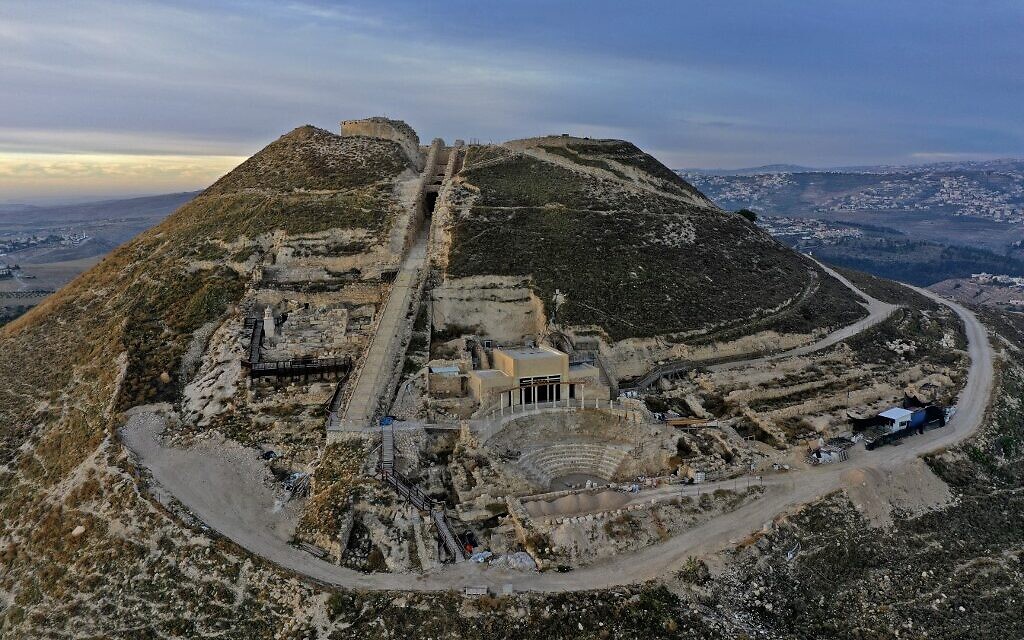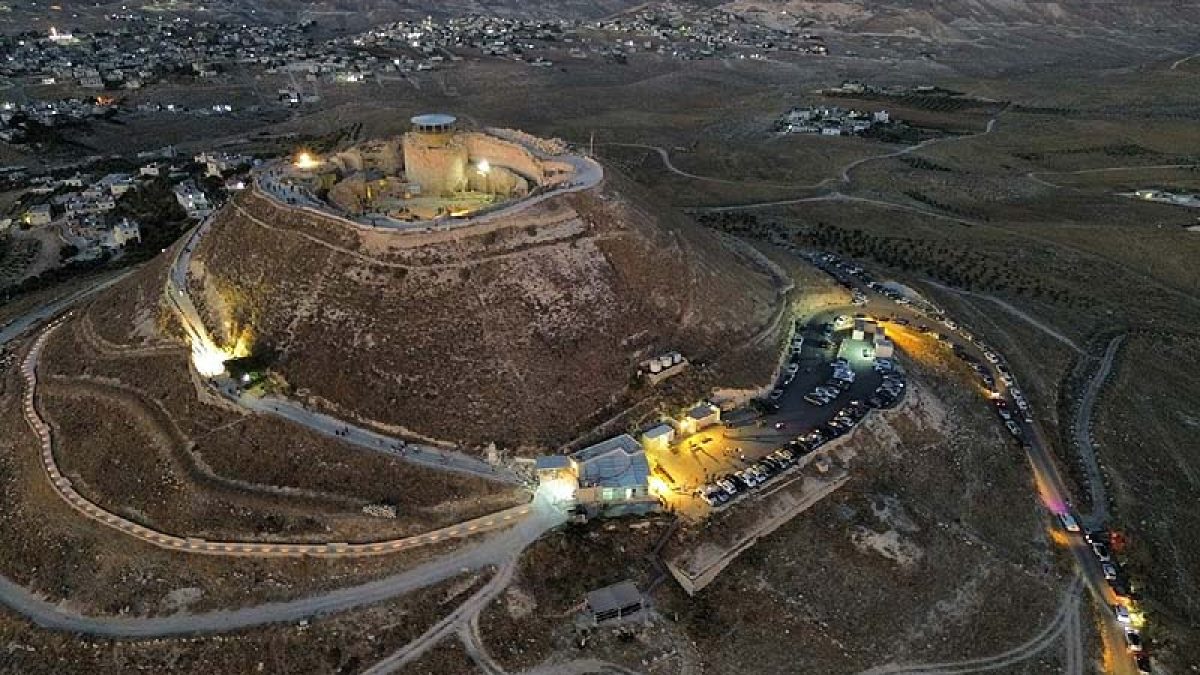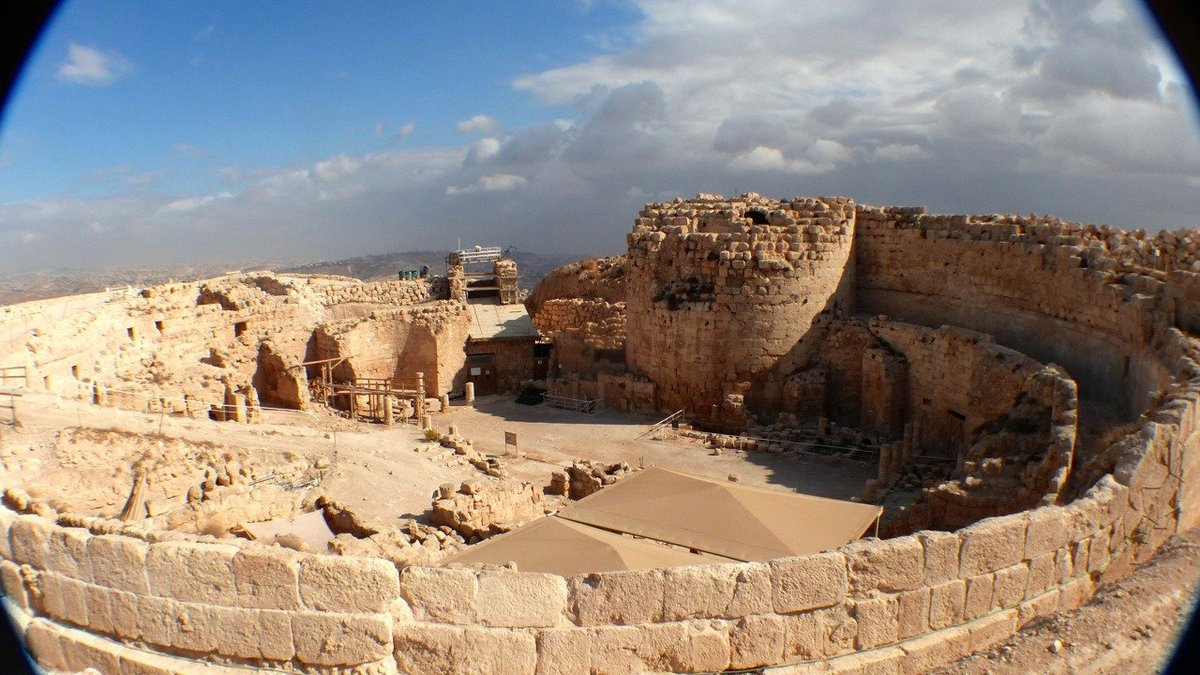Introduction
Herodium, or King Herod’s Palace, is an extraordinary archaeological site located in the Judean Desert, near modern-day Bethlehem in Israel. Constructed by King Herod the Great between 23 and 15 BCE, this remarkable complex served as a fortress, a royal residence, and ultimately, the king’s final resting place. Herodium is not only a testament to Herod’s architectural ambition but also a significant historical landmark that provides valuable insights into the life and times of one of history’s most fascinating rulers.

Historical Context of Herodium
King Herod the Great
Herod, appointed King of Judea by the Roman Empire, ruled from 37 BCE to 4 BCE. Known for his extensive building projects and efforts to consolidate power, he was a complex figure who navigated the challenges of governing a diverse population under Roman authority. Herodium was one of his most significant achievements, reflecting both his wealth and his desire for legacy.

Strategic Location
Herodium was strategically situated on a hill overlooking the surrounding landscape, providing a natural fortress that was both defensible and a symbol of Herod’s power. Its elevation allowed for control over trade routes and the surrounding territories, enhancing Herod’s influence and authority in the region.
Architectural Marvels
The Palatial Complex
The palace complex at Herodium featured opulent living quarters, elaborate gardens, and dining areas, all designed to reflect a luxurious lifestyle. The architecture showcased a blend of Roman and local styles, with intricate mosaics and frescoes that adorned the walls, highlighting the cultural synthesis present during Herod’s reign.

Bathhouses and Innovations
The bathhouses at Herodium were notable for their advanced design, featuring sophisticated heating systems known as hypocausts. This innovation allowed for hot baths, demonstrating the Roman influence on Herod’s architectural choices and the importance of hygiene and leisure in royal life.
The Tomb Structure
Among the most unique features of Herodium is the circular structure believed to be Herod’s tomb. Its design is thought to symbolize Herod’s aspirations for immortality and grandeur, aligning with the monumental architecture typical of his era. This structure serves as a poignant reminder of the king’s legacy and his desire to be remembered.
Archaeological Significance
Excavations and Discoveries
Ongoing archaeological excavations at Herodium have uncovered a wealth of artifacts, including pottery, coins, and inscriptions. These findings provide crucial insights into daily life, trade, and the cultural influences that shaped the region during and after Herod’s reign.

Historical Accounts
The works of Flavius Josephus, a first-century historian, offer invaluable context regarding Herod’s life and the construction of Herodium. His writings provide a narrative that complements the physical evidence found at the site, enriching our understanding of this historical figure.
Cultural and Religious Impact
Cultural Synthesis
Herodium stands as a prime example of the cultural synthesis that characterized Judea during Herod’s reign. The site reflects the blending of Greek, Roman, and Jewish influences, evident in its architectural styles and the artifacts uncovered. This cultural amalgamation is significant in understanding the social dynamics of the period.

Religious Significance
Although primarily a royal residence, Herodium also holds religious implications. Herod’s construction projects were part of his broader strategy to gain favor with both the Jewish populace and Roman authorities, showcasing his complex relationship with religion and politics.
Conclusion
Herodium is not just a monument to King Herod’s architectural brilliance; it is a vital link to understanding the historical, cultural, and religious landscape of ancient Judea. The remains of this magnificent palace complex provide invaluable insights into the life and times of one of history’s most intriguing rulers. As an archaeological and historical landmark, Herodium continues to captivate scholars and visitors alike, offering a glimpse into a fascinating era of power, culture, and legacy.

